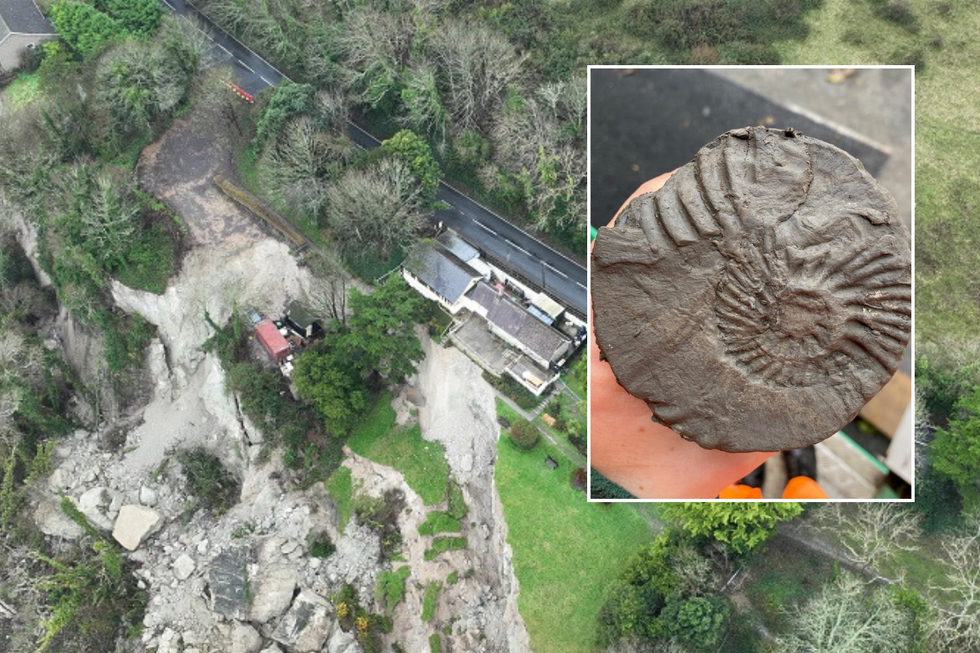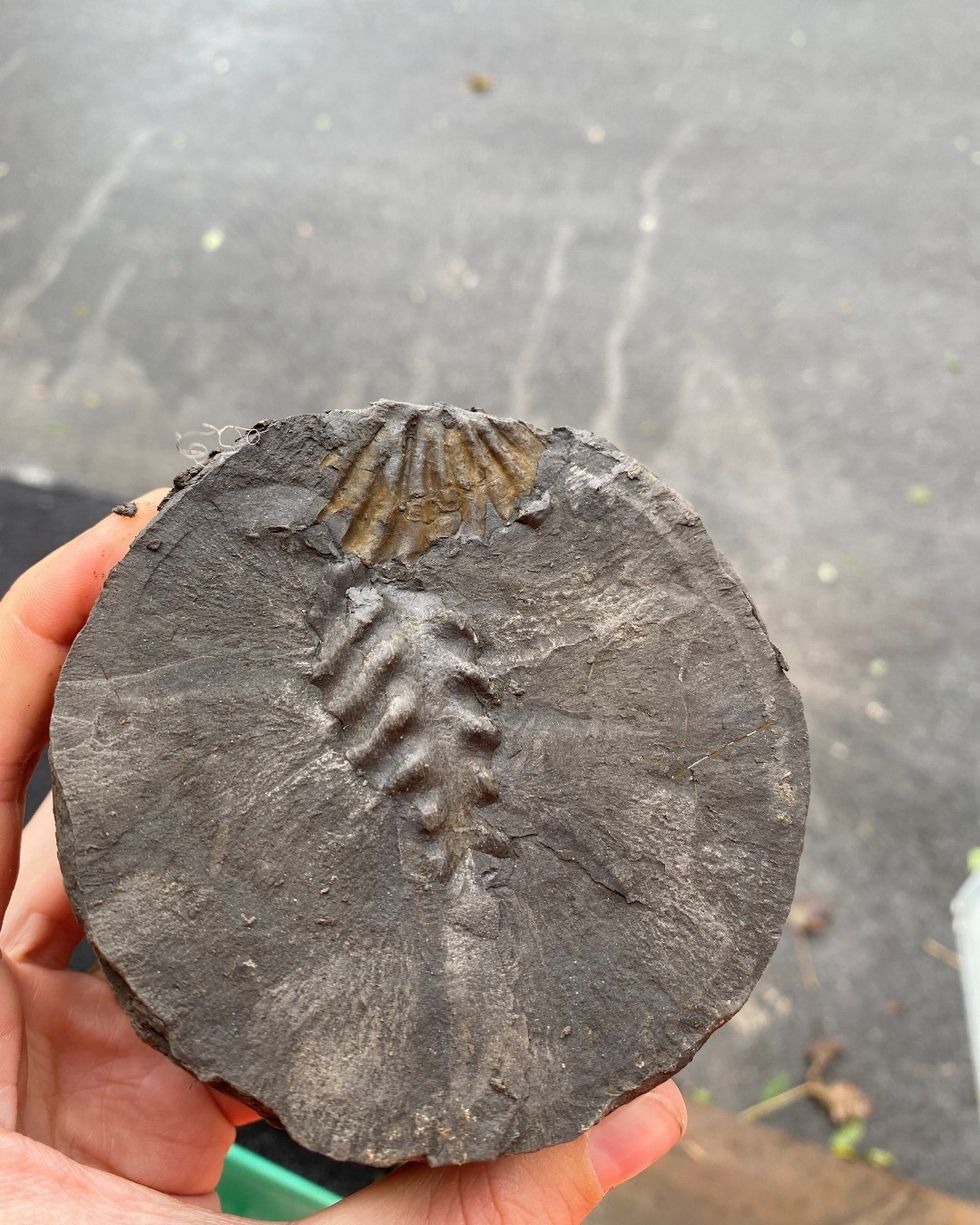One of the fossils discovered following the landslide
Isle of Wight Council
It comes after a landslide left roads on the Isle of Wight closed
Don't Miss
Most Read
Trending on GB News
A vast landslide has revealed a plethora of fossilised creatures dating back more than 100 million years.
The fossils were discovered after local authorities drilled boreholes reaching down 130m (437ft) on Leeson Road at Bonchurch, near Ventnor.
The boreholes were drilled to house monitoring equipment after the landslide on December 10, 2023, left houses teetering dangerously close to the cliff edge.
Isle of Wight Council said the fossils dated back more than 100 million years and were recovered from clay between 30m (98ft) and 90m (295ft) deep.

One of the fossils discovered following the landslide
Isle of Wight Council
Engineering geologist working for AtkinsRéalis on behalf of Island Roads and the Isle of Wight Council, Sophie Powell said: "We have found a mixture of bivalves, brachiopods and ammonites. When a fossil is well preserved it is possible to identify the scientific name of the fossil, we have managed this for a few.
"What we have found so far matches previous investigations in the area."
She added that due to the fact the boreholes were 102mm diameter, most of the fossils weren’t complete but they had found some intact specimens.
Experts said the fossils also provide useful markers and reference points that can help compare with the new boreholes and others already sunk in the area.
LATEST DEVELOPMENTS:

One of the fossils discovered
Isle of Wight Council
Officers from the council said the process allows monitoring equipment to be installed to record any small deep-ground movements and changes in groundwater pressures at different depths.
These smaller changes may contribute to larger-scale ground movements, including potential future landslides.
The boreholes are thought to be some of the deepest ever sunk on the Island.
The information from the equipment could allow the council to reopen the road when safe but shut immediately if significant movement is detected.
Nearly 30 pieces of equipment have been installed to measure vertical and horizontal movement and any widening of existing cracks.
Speaking earlier this year, service director for waste, environment and planning at Isle of Wight Council Natasha Dix said: "Visually, the road surface may look perfectly fine but what we don't currently know is what's happening deeper underground.
"This highly-sophisticated equipment will help us to peel back the layers to see the geological conditions underneath the road and whether there is voiding or further ground movement that could lead to a further catastrophic collapse."








